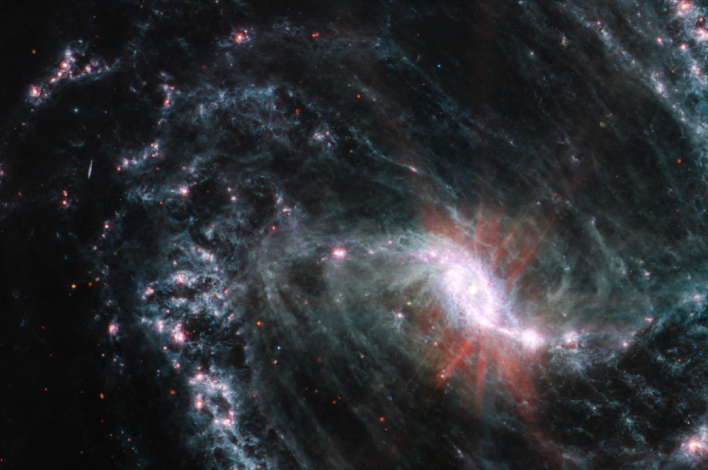NASA’s Webb Space Telescope Captures Stunning Majestic Shots Of Nearby Galaxies
The PHANGS team, led by Janice Lee, Gemini Observatory chief scientist at the National Science Foundation's NOIRLab, is currently studying a diversified group of 19 spiral galaxies that were captured in the first few months of the space observatory's time in space. Five of those targets - M74, NGC 7496, IC 5332, NGC 1365, and NGC 1433 (seen at the top) - are leaving the astronomers amazed.
"We are directly seeing how the energy from the formation of young stars affects the gas around them, and it's just remarkable," remarked team member Erik Rosolowsky of the University of Alberta, Canada.

The images were captured by Webb's Mid-Infrared Instrument (MIRI), one of four scientific instruments onboard the observatory. MIRI is the only mid-infrared instrument onboard, so astronomers rely on it to study cooler objects such as debris disks, which emit most of their light in the mid-infrared, as well as incredibly distant galaxies that have seen their light shifted to the mid-infrared over time.
Team member Karin Sandstrom of the University of California explains that Webb allows them to see areas in meticulous detail that were completely dark in Hubble imaging. Sandstrom says this gives "the ability to study how the dust in the interstellar medium has absorbed the light from forming stars and emitted it back out in the infrared, illuminating an intricate network of gas and dust."

Lee stated, "Thanks to the telescope's resolution, for the first time we can conduct a complete census of star formation, and take inventories of the interstellar medium bubble structures in nearby galaxies beyond the Local Group." She continued, "That census will help us understand how star formation and its feedback imprint themselves on the interstellar medium, then give rise to the next generation of stars, or how it actually impedes the next generation of stars from being formed."
Being the images from JWST are released to the public as soon as they are observed and received on Earth, the PHANGS team and others will continue to study the incredibly detailed images in order to try and solve the mysteries of the universe.


